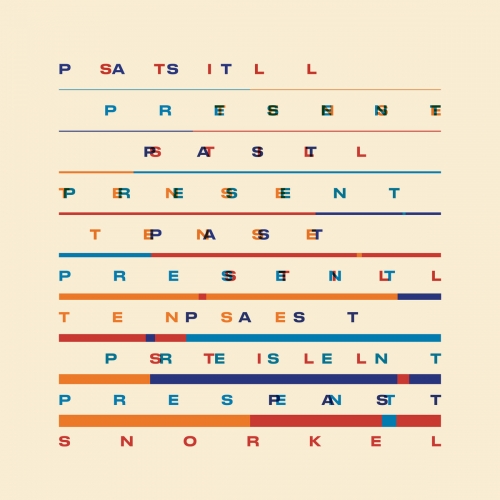Juan Carlos Rivera - Johann Sebastian Bach - Suites BWV 1007, 1008, 1009 (1999)

Artist: Juan Carlos Rivera
Title: Johann Sebastian Bach - Suites BWV 1007, 1008, 1009
Year Of Release: 1999
Label: Lindoro
Genre: Classical
Quality: flac lossless
Total Time: 01:07:02
Total Size: 251 mb
WebSite: Album Preview
Title: Johann Sebastian Bach - Suites BWV 1007, 1008, 1009
Year Of Release: 1999
Label: Lindoro
Genre: Classical
Quality: flac lossless
Total Time: 01:07:02
Total Size: 251 mb
WebSite: Album Preview

Tracklist
01. Suite BWV 1008: Prelude
02. Suite BWV 1008: Allemande
03. Suite BWV 1008: Courante
04. Suite BWV 1008: Sarabande
05. Suite BWV 1008: Menuet I-II
06. Suite BWV 1008: Gigue
07. Suite BWV 1007: Prelude
08. Suite BWV 1007: Allemande
09. Suite BWV 1007: Courante
10. Suite BWV 1007: Sarabande
11. Suite BWV 1007: Menuet I-II
12. Suite BWV 1007: Gigue
13. Suite BWV 1009: Prelude
14. Suite BWV 1009: Allemande
15. Suite BWV 1009: Courante
16. Suite BWV 1009: Sarabande
17. Suite BWV 1009: Bourrée I-II
18. Suite BWV 1009: Gigue
We talked about the best music my cousin Mr. Wilhelm Friedemann of Dresden, along with those famous lutenists, Mr. Weiss and Mr. Kropffganss, played in our house.
This is what can be read in a letter to Elias Bach, a relative of J. S. Bach, wrote on August 11, 1739. Two German musicians and composers, Weiss and Kropffganss are known as the most eminent virtuosos on his instrument.
The lute reached its peak at the beginning of the eighteenth century and both musicians are regarded as the last representatives of this development.
John Sebastian Bach himself seems to be very liberal with his own pieces and those of other composers. The rewrite, used parts for other compositions, and most importantly for our reflection: the adaptations for other instruments. The best known example is his own transcription of the Suite No. 5 for Cello (BWV 1011) for the lute. This transcript is kept handwritten to tablature (BWV 995).
We do not know much about Bach’s attitude toward the lute and it is doubtful whether he really knew all about the details of this instrument. The interpreter is confronted here with very complicated and difficult positions and unusual lines of polyphony. But we also know that Bach is not concerned about technical problems in most of his works.
What could have on the head when dealing with the Bach lute? Several things are possible: the so-called «baroque lute» with his pitch in D minor (probably this was the instrument he used SLWeiss) or perhaps «Theorbo,» a tune on the lute under the sun with some strings or lower, allowing a wider musical tessitura. Or perhaps the key instrument «lautenwerk» or «clavilaúd?. Two of these rare instruments were found in Bach’s house and we know that he had often tried with them. For a transcript of the suites for cello, think of all these instruments, but the results show very different needs, opportunities and of course differences in the sound.
Does it make sense to transcribe for a plucked string instrument, written music for bowed string one?. To respond, remember, above all, the transcript made by Bach himself from Suite No. 5, apart from the many versions of guitarists such as Andres Segovia, Julian Bream and Narciso Yepes, or lutenists as Nigel North, Hopkinson Smith and others. So, there are so many answers to this question, the problem seems to have no great importance.





![Tomasz Stańko - Zamek mgieł (Polish Radio Sessions vol. 3/6) (2025) [Hi-Res] Tomasz Stańko - Zamek mgieł (Polish Radio Sessions vol. 3/6) (2025) [Hi-Res]](https://www.dibpic.com/uploads/posts/2025-12/1765795906_cover.jpg)

![Koldo Munné & 1520's Ensemble - Live at Jamboree Live Music (2025) [Hi-Res] Koldo Munné & 1520's Ensemble - Live at Jamboree Live Music (2025) [Hi-Res]](https://www.dibpic.com/uploads/posts/2025-12/1765846749_ck2b0xbsb8jna_600.jpg)
![Betty Carter - The Music Never Stops (2019) [Hi-Res] Betty Carter - The Music Never Stops (2019) [Hi-Res]](https://www.dibpic.com/uploads/posts/2025-12/1765896843_bcmn500.jpg)